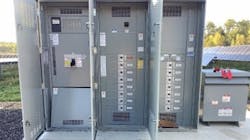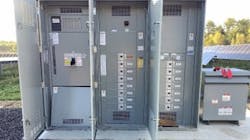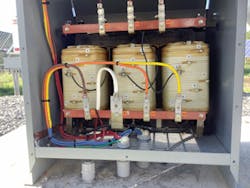When Is the Power Quality Issue Not the Issue?
In my 30-plus years in the industry, I have been asked by many clients to assist them in determining and correcting power quality (PQ) issues. When asked what power quality is, most would say “harmonics” or “voltage sags.” The term has become generic and can encompass all kinds of voltage and current variations, transients, imbalances, etc., all of which can create costly damage and nuisance interruptions to both electrical loads and generation.
One such recent client, who was the operator of a large solar farm, was experiencing nuisance interruptions, causing significant downtime. I was asked to install portable PQ metering and digital fault recording (DFR) equipment to determine the source of the nuisance trips.
These trips seemed to center around a grounding transformer that was installed to meet effective grounding requirements (a topic for a later date) and limit voltage rise on un-faulted phases during ground faults. (Note that large solar PV inverters are either ungrounded 3-phase devices or have a known impedance neutral-to-ground used to detect ground faults). These non-linear generators frequently increase harmonic currents, and consequential issues can be created. The client was adamant that there was a problem with the grounding transformer and/or switchboard breaker, even though the equipment was acceptance tested by a third party prior to energization in accordance with ANSI/NETA-ATS, Acceptance Testing Specifications, Section 7.2 & 7.6.
Before sending a technician, who was four hours from the site, to install expensive PQ meters, it was worth a deeper dive into the system design, equipment sizing, and protection to further analyze the issue. The sizing of the zig-zag grounding transformer was reviewed and deemed to be acceptable. I asked to review the coordination study done by the original engineer as part of a wider review of drawings, test reports, etc. It was noted that the coordination done by that original engineer was sufficient. Still, it only included phase overcurrent from the electric utility interconnection down to the medium- and low-voltage breakers. I noted no proposed settings for the ground fault units on the breakers.
The electric utility system is 3-phase, as is the generator, so theoretically there should be minimum current on the neutral or the ground. However, experience has taught me that no electric utility system is as it’s shown in textbooks, nor is it perfectly balanced. This is usually due to variations in line impedance and the presence of single-phase loads.
What was discovered was this: Due to a slight variation in grid voltage, there was current in the neutral of the grounding transformer flowing back to the grid. This condition was exacerbated as the solar farm ramped up its generation during daytime hours. This imbalance flow of current was enough to trip ground fault trip units because they were never set to accommodate normal imbalances and be sensitive/selective to detect actual faults and quickly interrupt the affected equipment, minimizing equipment damage and maintaining worker safety. Proper selective device coordination was done, and these breaker and relay settings were implemented in the field — correcting the issue and increasing system uptime without costly PQ monitoring, testing, or equipment replacement.
Power quality issues are frequent causes of interruptions and equipment damage in low-, medium-, and high-voltage distribution and generation systems. These issues can be made worse by improperly sized equipment or poor system grounding (again, a topic for another day). We have great tools to meter, monitor, and model power systems to aid in designing and interpreting power systems and the events that occur on them. The trick is knowing where and when to look before you leap.
David Colombo, P.E. is a professional engineer located in Massachusetts, and the owner and principal of Power Engineers, LLC, a design, engineering, and consulting firm. He has more than 30 years of experience in the electrical engineering and construction industry. He is involved with designing electric utility substations & distribution infrastructure, large-scale renewable energy projects, and commercial/industrial power systems. He specializes in the areas of medium-voltage design, power distribution, protection, metering, power quality, power studies, and arc flash analysis. He also provides owner’s engineering support for developers, EPC contractors, and project owners. Before starting Power Engineers, LLC as an engineering consultant, he was an electric utility distribution supervising engineer. He holds a bachelor of science degree in electrical engineering from Worcester Polytechnic Institute (WPI) and a master of engineering degree in electric power engineering from Rensselaer Polytechnic Institute (RPI). He is a registered professional engineer in 13 states.
About the Author

David Colombo
David Colombo, P.E. is a Professional Engineer located in Massachusetts, and the owner and principal of Power Engineers, LLC, a design, engineering and consulting firm. He has over 30 years in the electrical engineering and construction industry and is involved with the design of utility substation & distribution infrastructure, large scale renewable energy projects, and commercial / industrial power systems. He specializes in the areas of medium-voltage design, power distribution, protection, metering, power quality, power studies and, arc flash analysis. He also provides owner’s engineering support for developers, EPC contractors and project owners. Prior to starting Power Engineers, LLC and being an engineering consultant, he was a utility distribution supervising engineer. He holds a Bachelor of Science degree in Electrical Engineering from Worcester Polytechnic Institute (WPI) and a Master of Engineering degree in Electric Power Engineering from Rensselaer Polytechnic Institute (RPI). He is a Registered Professional Engineer in 13 states.


